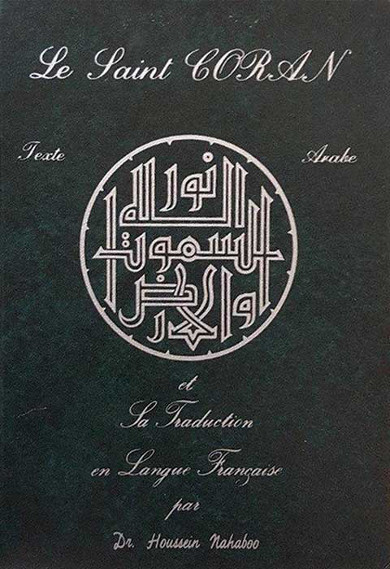On the Indian Ocean island of Mauritius, a dentist called Houssein Nahaboo (1920–2000) published Qur’an translations in no less than three languages – Mauritian Creole, French and English – during the 1980s. Through the lens of the small Muslim community of Mauritius in general, and Nahaboo’s work in particular, we can observe both the local rootedness and global entanglements of Qur’an translation in the post-colonial era of nation states. (For a thread on a Mauritian Qur’an translation from the colonial period, see Qur’an Translation Of The Week #145).
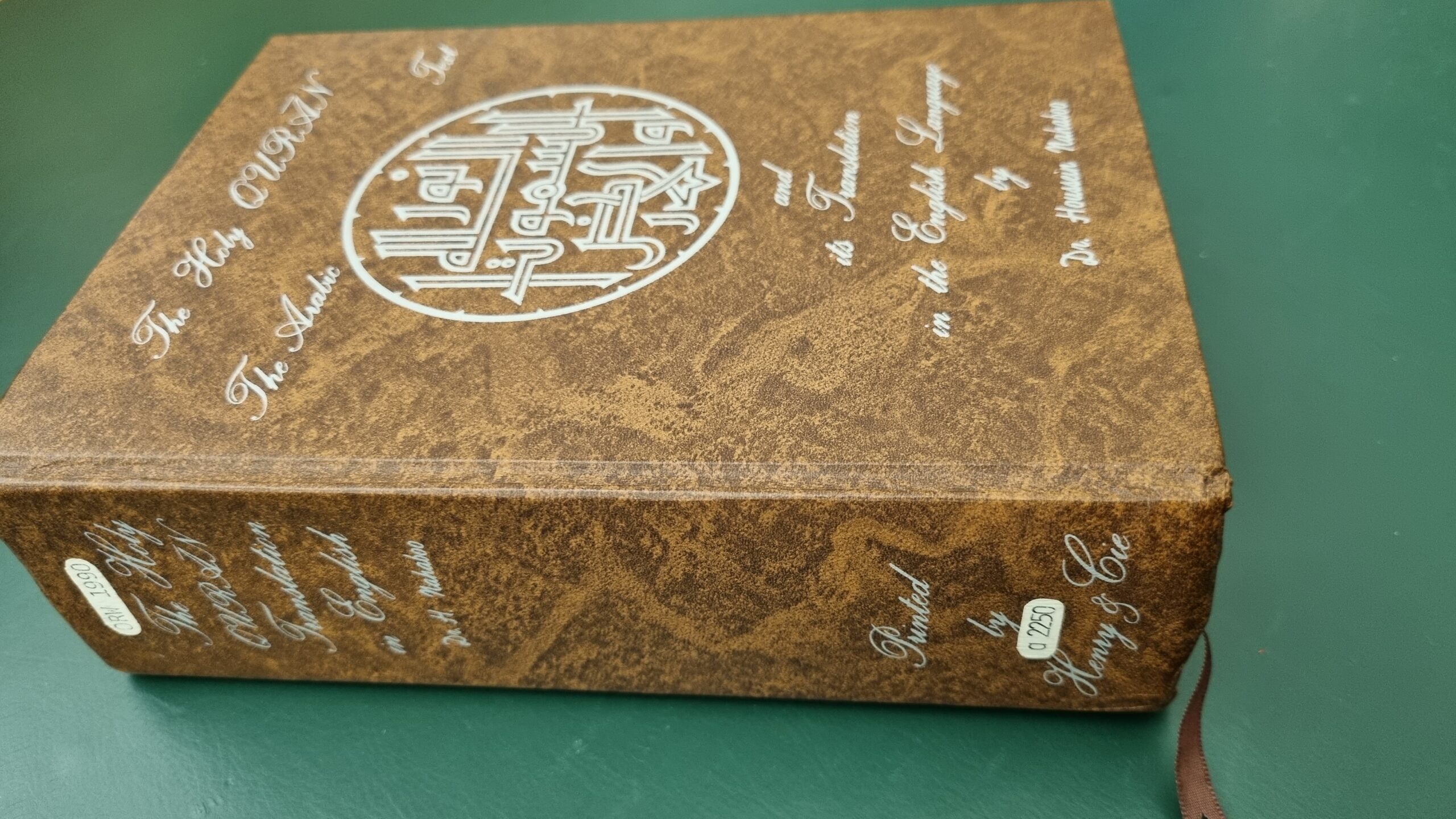
Nahaboo was a successful dentist who held degrees from English and Scottish universities and owned a clinic in the town of Curepipe. He was also the first Mauritian to be awarded a fellowship in dentistry by the British Royal College of Surgeons. A deeply pious man, he engaged in daʿwah to educate his fellow Muslims about Islam. Like practically all Muslims on Mauritius, who today constitute approximately 17% of the population, Nahaboo had familial roots in British India. However, he belonged to a generation of Mauritian Muslim activists whose focus was no longer on India but on the island they called home. Consequently, Nahaboo chose to conduct his daʿwah activities in Mauritian Creole (also spelled Kreol), the local language of everyday communication. This distinguished him from previous generations of Muslim preachers on the island, who had mostly used Indian languages, in which fewer and fewer Mauritian Muslims were fluent. While English remained the official language on Mauritius after the country attained independence in 1968, and French was the most widely used medium of formal and written communication, Creole was what most Mauritians grew up speaking.
According to Nahaboo, at some point in his life, probably no later than the 1950s, his religious commitment drove him to familiarize himself with the divine message, but he soon found himself frustrated with the available Qur’an translations into English and French. His main requirement of a translation was that it should be easily readable, and contain just enough annotation to allow the reader to make sense of the Qur’an’s meaning. He felt that the translations he had at his disposal either lacked sufficient annotation or had so many notes that the Qur’an’s message was drowned in commentary and personal reflections.

Temporarily giving up dentistry to focus on Islamic activism, Nahaboo started studying Arabic in order to read the Qur’an in the original, and eventually went to Riyadh to further his study of the language. Towards the end of his visit in Saudi Arabia, which probably took place in the late 1960s or early 1970s, he was asked by the Saudi Dār al-Iftāʾ, which worked with the Muslim World League, to revise ‘a current and well-known’ French Qur’an translation due to his fluency in French. It is clear that this request referred to the French Qur’an translation by Muhammad Hamidullah, first published in 1959. The ensuing revision seems to have been carried out during a time span of nine months by Nahaboo and the Syrian lawyer and Islamic activist Maḥmūd Bāballī (1922–2009), who also lived in Riyadh at the time. The project was completed but never published. We can only speculate about the reasons for this; perhaps Hamidullah did not give his consent or the Muslim World League did not have the resources to examine and proofread the revised edition. However, it may well have had an afterlife in the 1989 edition of Hamidullah’s translation that was published by the King Fahd Glorious Qur’an Printing Complex, as we shall see later. But, when Nahaboo returned to Mauritius, he had no way of knowing this would come about.
While he waited for the Muslim World League to publish its new edition of the Hamidullah translation, Nahaboo used the expertise he had gained during the revision process to translate the Qur’an into Mauritian Creole, ‘the tongue most easily understood by my countrymen.’ His aim was ‘in line with the work already done in Riyadh,’ namely, to again provide an easily readable translation, with just enough notes to allow people to understand the text but without entering into ‘any deep philosophical discourse.’ Quran en kreole ek tex arab, on which he worked for five years, was first published in instalments in 1983 by the Islamic Students Movement and the Islamic Women’s Movement in Port Louis, the capital of Mauritius. Since the French translation he had revised in Saudi Arabia was still not published by this time, and Nahaboo had lost hope that it would ever materialize, he now started working on his own French translation. Moreover, the positive reception of his Creole translation also encouraged him, as he wrote, ‘to look beyond the horizon of our small island and increase the scope of my readers by the publication of this work in a tongue spoken by millions around us and in the whole world.’ This was, of course, English; and he undertook his English and French translations simultaneously. The Holy Qurān: The Arabic Text and its Translation in the English Language was published in 1987, and the French version, entitled Le Saint Coran: Texte Arabe et Sa Traduction en Langue Française, came out around the same time. Both were self-published.
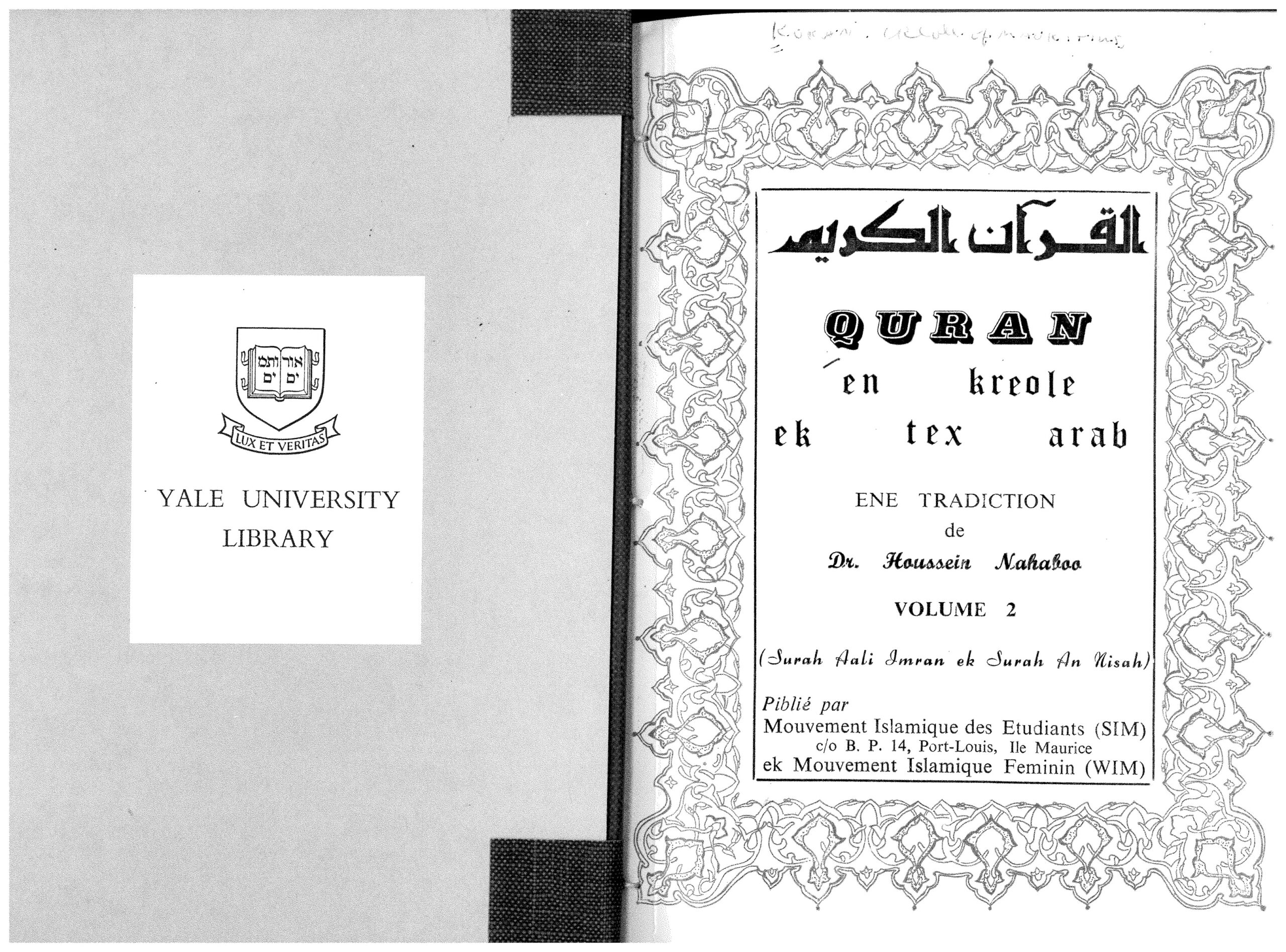
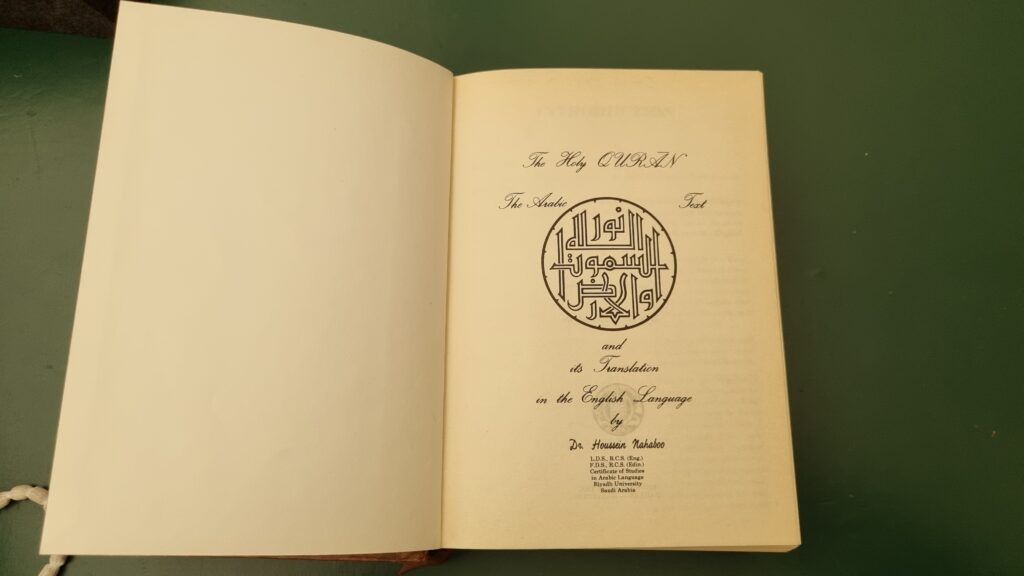
Nahaboo argued that disseminating knowledge of the contents of the Qur’an was especially important because it would enable people to critically evaluate the teachings of ‘new sects’ that ‘rely on mass psychology to entice people into their nets,’ quoted the Qur’an as evidence of their ‘fanciful ideas’ and relied on the fact that the average Muslim held the Qur’an in reverence but was ignorant about it. This description of these ‘new sects’ was almost certainly aimed at the Ahmadiyya Muslim Mission which had had a strong presence on the island since 1915.
Nahaboo’s focus, in all three translations, was on providing an easily understood text that gave ethical guidance in a style that would satisfy academics as well as illiterate Muslims: ‘I have tried to spare my readers the cerebral fatigue I experienced myself,’ he wrote. Pooh-poohing the discourse on the untranslatability of the Qur’an due to the inimitability of its style, he asserted that what most readers are looking for in a translation is ‘only the practical side of the Book, the do’s and dont’s.’ This understanding of the function of Qur’an translations governed his translation choices, both linguistic and exegetical.
On the linguistic level, this can be seen, for example, in his use of modern English, rather than the archaic ‘King James style’ that was still very much the dominant paradigm for English Qur’an translations at the time. It can also be seen in his decision to write in a ‘Frenchized’ Creole that uses French orthography and elements of French syntax. This contrasted with the position taken by postcolonial pro-Creole activists, especially Dev Virahsawmy (b. 1942), who aimed to elevate Mauritian Creole to the status of a literary language that was independent of French and used a phonetic spelling. For example, in Dev Virahsawmy’s translation of Shakespeare’s drama ‘Julius Caesar,’ the title was spelled ‘Zil Sezar,’ as opposed to the French ‘Jules César.’ Nahaboo, however, was less concerned with postcolonial language politics than he was with the pragmatic requirements of daʿwah, and he believed that the use of French orthography in his Creole text would make his translation more accessible to literate readers, just as he believed that the use of modern English would make his English translation easier to understand.
As far as his exegetical decisions are concerned, Nahaboo was extremely confident of his ability to explain the Qur’an in a manner that would help readers gain clarity about its meaning. While he acknowledged that some verses in the Qur’an are mutashābih, i.e., ambiguous or incomprehensible to humans, he argued that this is mostly limited to verses describing transcendental matters which are beyond human imagination, as well as a small number of mysterious expressions, especially the disjointed letters that feature at the beginning of some suras. With regard to the rest of the Qur’an, he warned Muslims against the facile solution of saying ‘And God knows best’ whenever a Qur’anic utterance is not easily comprehensible at first glance and urged them to use their brains instead.
Wherever possible, Nahaboo strove to harmonize between divergent interpretations and to deliver a translation that would be non-divisive. For example, with regard to the question of whether God’s anthropomorphic attributes should be understood literally or metaphorically, he chose in his English translation to deliver a literal translation accompanied by a note that provides a broadly accepted metaphorical interpretation. Thus, he rendered Q 20:5 (al-Raḥmānu ʿalā l-ʿarshi stawā) as ‘The Most Compassionate is firmly established on the throne’ and added a note that says ‘Allah’s authority on all creation is unquestionable.’ This desire to provide a balanced, consensual view is also visible in his commentary on Q 3:55, a verse whose interpretation is highly contested by Ahmadiyya and non-Ahmadiyya translators. Ahmadiyya translators render the word mutawaffīka, with which God addresses Jesus, as ‘I will cause you to die’ and take it to affirm their belief that Jesus died on Earth at the end of his natural human life span, whereas most non-Ahmadiyya translators avoid this translation because they believe that God raised Jesus to heaven while the latter was still alive. This latter position is the one taken by Nahaboo, who translated mutawaffīka into English as ‘I will take you back.’ However, he added a note that acknowledged the Ahmadiyya reading and remarked that while it ‘appears contrary to the general belief,’ ‘one must remember that nothing is impossible to Allah.’
Nahaboo’s three translations are very similar, for obvious reasons. All of them are bilingual and set in a two-column layout, with the translated text in the left column and the Arabic Qur’an, written in Indian style, on the right. They often display the same exegetical choices and stylistic decisions. But there are also distinctive differences between them. There are a number of reasons for this, some of which are related to the sources and the history of Nahaboo’s translations.
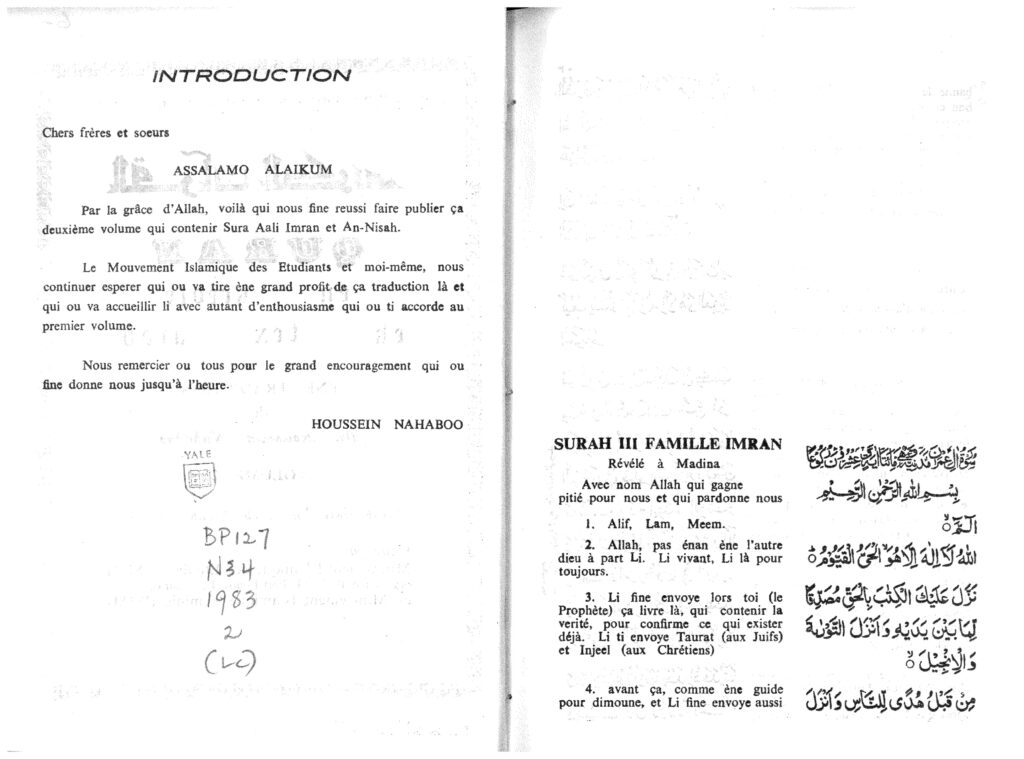
To begin with, Nahaboo’s Creole translation is the only one that contains no annotation. Consequently, it contains more explanatory content in the text of the translation itself than the English and French versions. Despite this, the total amount of commentary is lower, probably because the readership envisaged by Nahaboo was less educated than that of the English and French translations, and maybe also because he wrote it first. In some instances, there are parallels between the French and English translations that are lacking in the Creole version. For example, in his translation of Q 5:51, Nahaboo has the Qur’an warn believers against taking the Jews and Christians as ‘protectors’ in Creole while he translates awliyāʾ as ‘allies’ in both French and English.
Secondly, it is clear that Nahaboo’s English translation was very much inspired by Abdullah Yusuf Ali’s popular translation. At times, it reads like a simplified version of it written in modern English. However, having said that, Nahaboo frequently made choices that differed from Muhammad Ali’s, both stylistic and exegetical.
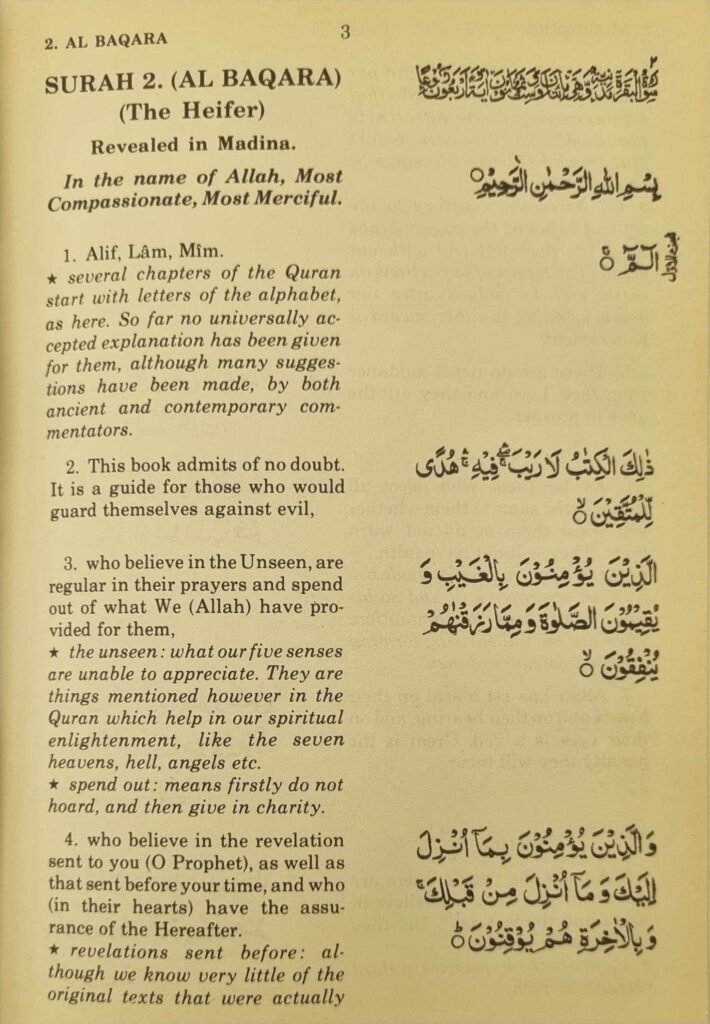
When it comes to Nahaboo’s French translation, this is conspicuously close to the revised version of Muhammad Hamidullah’s translation that the newly-established King Fahd Glorious Qur’an Printing Complex in Medina, which had taken over the Qur’an translation activities of the Muslim World League, published in 1989. In fact, Nahaboo’s French translation and the King Fahd Complex’s version of Hamidullah are significantly closer to each other than either of them is to the original translation by Hamidullah. Since Nahaboo’s French translation came out before the King Fahd Complex published their version of Hamidullah, Nahaboo cannot have copied from this. A far more likely explanation is that the King Fahd Complex used the revised version that Nahaboo and Bāballī had completed long ago, without crediting them, and that Nahaboo based his own translation on that revised version as well. As a consequence, the French translation bears some traces of the Saudi environment in which it was produced. For example, Nahaboo uses Arabic terms such as ṣalāt and zakāt in his French translation, while in his English translation he replaces them with English terms such as ‘prayers’ and ‘deeds of charity.’
Despite his use of existing translations such as those by Yusuf Ali and Hamidullah, Nahaboo often diverged from them in favor of interpretations that usually have a basis in the exegetical tradition. For example, Q 99:7 (fa-man yaʿmal mithqāla dharratin khayran yarahū) is typically rendered into Western European languages along the lines of ‘whoever does an atom’s weight of good will see it.’ Nahaboo, however, renders this verse into English as ‘Then anyone who has done good to the weight of the smallest ant will see it,’ and provides a similar translation in French. In this avoidance of the word ‘atom,’ he not only differs from Yusuf Ali and Hamidullah, among others, but also from the KFC version of Hamidullah. Instead he follows a mainstream interpretation found in many Qur’anic commentaries, including the Tafsīr al-Jalālayn. It is clear that he had no desire to use modern scientific terminology in his translations; the concept of the ‘scientific miracle’ of the Qur’an apparently held no appeal to him.
Apparently, Nahaboo’s Creole translation was republished in a luxurious one-volume hardcover edition with added transliteration of the Arabic Qur’an in the 2000s. However, not even the National Library of Mauritius has a copy of this work. All of Nahaboo’s translations are difficult, and sometimes next to impossible, to obtain. His lack of access to publishing networks and the semiprofessional state of Islamic publishing on Mauritius in the 1980s prevented his works from gaining a readership beyond the island. This was quite different to the fate of the revision he undertook for the Muslim World League. If he was really a major contributor to the Saudi version of Hamidullah’s Qur’an translation, which seems likely, then his legacy lives on, albeit unacknowledged, in what is probably the most popular French Qur’an translation targeting a Muslim readership up to the current day.
Johanna Pink
